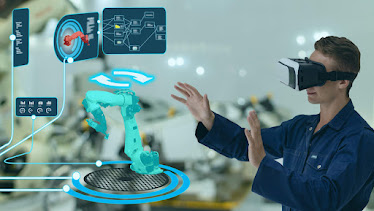Everything You need to know about VR Training Solutions
Technology has advanced dramatically in recent years. Classrooms and training centers first became equipped with smartboards and projectors but today the scenario has changed even more. Learners are more interested in learning through immersive and hands-on experiences rather than just accumulating theoretical knowledge. And in order to fulfill this demand, VR Training solutions have replaced traditional methods of teaching. VR training is interactive, immersive, and completely safe for learners.
A Futuristic Perspective
There is no denying that experience is the best teacher. Active learning helps people learn as well as retain information. It also helps people in minimizing errors even if they cannot completely avoid making mistakes. Over the years, technology has evolved and today firms and businesses around the world can provide a safe place for their employees to learn actively and train. This technology is tried, tested, and completely reliable.
It helps
people in learning procedural tasks in almost the same way as they would on the
actual job. Moreover, there is space for people to make mistakes and learn from
them. For instance, fleet owners can train their employees to drive on rough
terrain or under harsh weather conditions without any damage to the goods by
using a truck
driving simulator.
The Effectiveness of VR Training
Several studies have found that VR training offers
significant advantages when compared to online or even in-person training
across a variety of measures. It also largely depends on the kind of training.
Training someone to build a car is much different from training someone to fly
a jet. However, data shows that VR training offers several benefits in saving
costs. It also enhances productivity and retention of information. The
following are some other benefits of VR Training:
1.
Time-Saving
Interactive and immersive learning helps people learn much
faster than traditional methods of learning. A study found that VR learners
complete their training four times faster than learners who learn via
traditional methods and around 1.5 times faster than online learning.
2.
Cost-effective
Training can be done at multiple locations and it is easily
scalable. Moreover, there are no extra charges for the repetition of the same
aspect. People can repeat the process as much as they want to, till they master
it. For instance, a bus
driving simulator can be used by drivers to learn to reverse park
buses till they’ve mastered the process.
3.
Increased
Engagement
Whether someone needs procedural training or requires soft
skills training, a realistic environment is crucial for learning. It was found
that learners tend to be around 3.75 times more connected to the training
content when it is provided through a virtual environment. There is nothing
better than an environment that provides an immersive experience to elucidate
emotional responses.
4.
Improved
Recall
When learners are entirely engaged, they tend to retain
information for a longer period of time. Retention levels have been found to be
around 80 percent more when making use of virtual training than when learning
via classroom-based learning.
Also Read: The Importance of Electric Vehicle Simulator in Vehicle Development
Conclusion
Apart from the aforementioned benefits, another advantage of
VR training is that it provides a hands-on experience even for procedures that
were traditionally dangerous or difficult to access. Thus, there is an overall
improvement in the safety provided by VR training environments.
%20neww.jpg)



Comments
Post a Comment